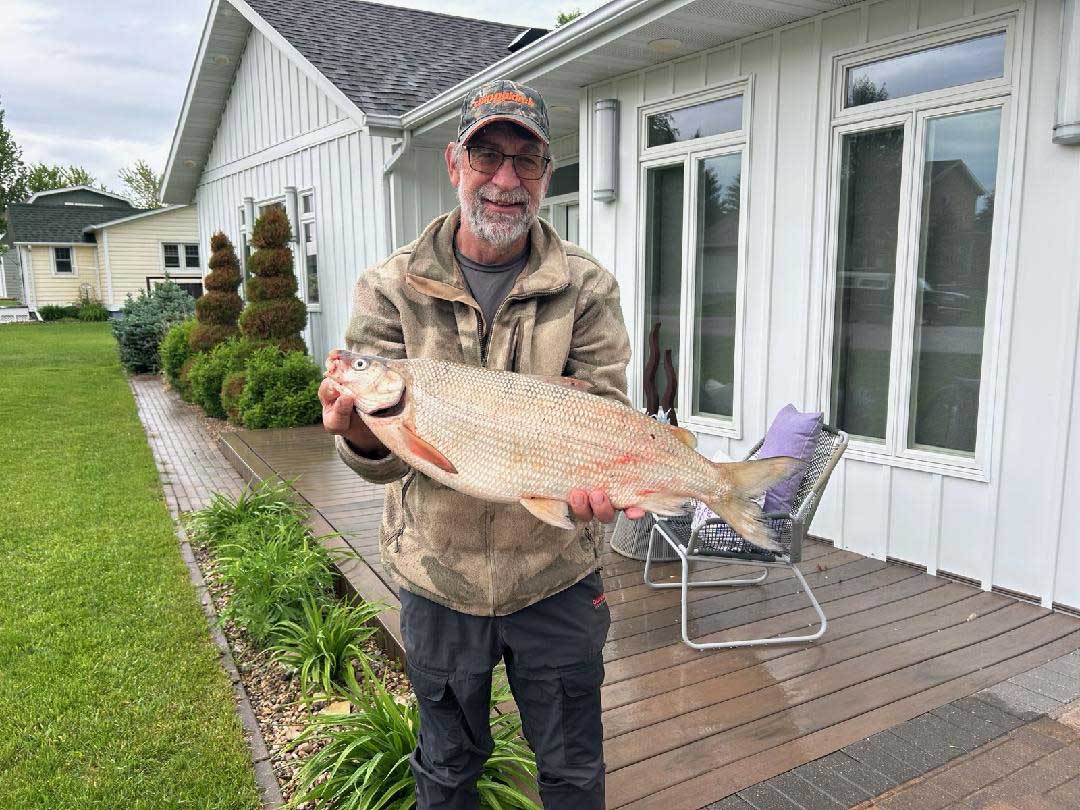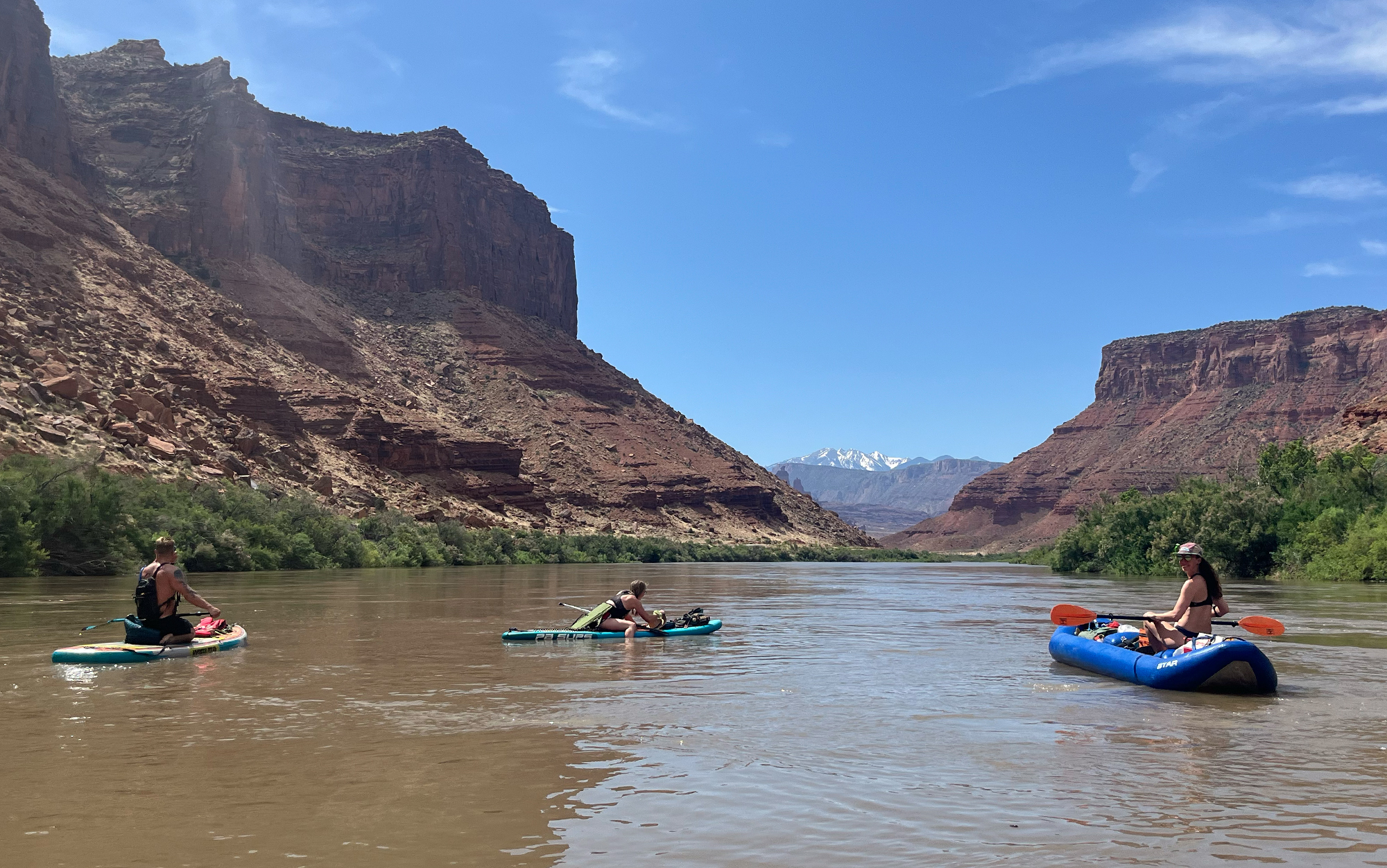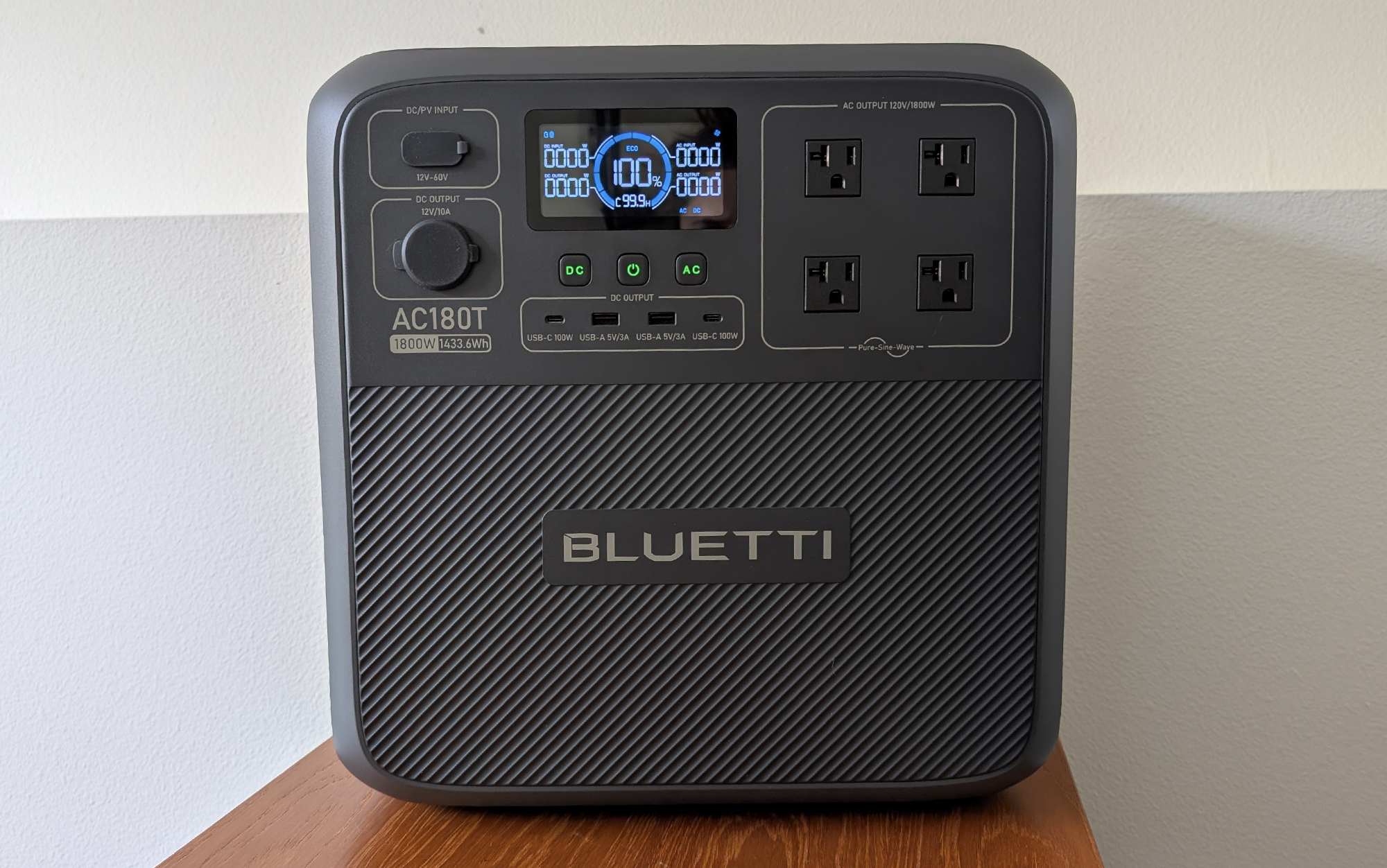No Adult Would Take Me Fishing, So I Became a Stowaway

This story, “Ballerinas of the Blue,” appeared in the September 1955 issue of Outdoor Life.
I will never forget the fishing trip that gave me my first opportunity to go into combat against dolphin. It occurred long ago, back in the days when the more prosperous anglers in our area chugged from home to docks in Model T Fords. The fishing grounds were off Montauk, the easterly tip of New York’s Long Island.
In those days dolphin didn’t flop to gleaming decks like those on fishing craft commonly associated with Montauk today. Neither were they taken with rods and reels that would set you back a month’s pay. Most were horsed in with hand lines strong enough to whip a mature cow halibut; the rest yielded more nobly to the creaky flexings of lancewood rods. More nobly, that is, depending on the angler’s skill. On the trip that sticks in my memory, however, the lancewood was in the hands of a stowaway — me.
Fourteen years old and goggle-eyed with excitement, I was fresh from a farm on the Connecticut side of Long Island Sound, and I’d crept aboard the Hilda, a plodding trawler crusted with spray. Rangy, rugged Jake Brannon, a commercial fisherman who moored the Hilda in a tidal river near our village, was the skipper.
Though I was aboard the vessel without his consent, Jake and I weren’t strangers. Most of my experience in saltwater fishing up to then had come because I’d helped him pull lobster pots and beam-trawl nets, tong for quahogs, and handle lines for blackfish, fluke, weakfish, and bluefish. I never thought of such activities as work-like hoeing corn and pitching hay. The sea and fishing fascinated me.
Jake’s gift for spinning yarns was partly to blame for my stowing away. Sometimes, usually when fishing on our side of the sound slumped, he’d chug across to Block Island and Montauk grounds which seemed to me then as glamorous as Cabo Blanco and Acapulco do today — and come back with tales that set my imagination on fire. The pay-off came one day when he returned with a giant swordfish lashed across the Hilda’s deck.
“Please, Jake,” I begged, “take me along next time.”
“Not on your life,” Jake snorted. “You’re too young, and you’ve got too many thumbs and left feet for that kind of water.”
But I was determined to go, and when a few nights later I overheard Jake say that he was pulling out next morning for Montauk, I slipped aboard before dawn and hid below among gear and supplies.
The force of the strike had jarred me from neck to ankle, and I had the impression I was tasting fire and smelling smoke as the sash-size hand line burned across my palms. Then a terrific jerk sent me lurching forward.
The Hilda was in sight of Montauk Light when I came on deck. “Hello, Jake,” I said. “Golly, I sure slept hard. We ready to haul pots?”
Jake’s lower jaw dropped. Then he roared, “Why you sculpin-scaled scalawag! You knew I was bound for Montauk. I should slice off your ears for bait.”
Jake wasn’t the sort of a fellow who could be angry for long, and I’d counted on that. Instead of turning back, he held the Hilda on her outbound course.
We were so far out by noon that Montauk’s shoreline was a blur. It was a splendid August day, sunny and blue-skied, and there was only a mild chop on the Atlantic’s surface. Jake had put three hand lines overboard several hours before, two for himself and one for me. School tuna were plentiful, and our Japanese feathers had already taken a large number ranging from six to 10 pounds.
Then we came across an exceptionally large mass of seaweed off the port bow, and Jake swung the helm so that we’d skirt it. I sensed he was expecting something.
“Keep your eyes smart now,” he warned. “There might be some bigger tunny hanging around. If they’re too much for you to handle, hitch your line around a cleat and wait’ll I get to you. I don’t want to be fishing you out of the drink.”
Suddenly a bulge appeared near my feather, and a wide wake seethed as a big fish aimed for my lure, shot level, rushed, and struck with the impact of a fallen mast. The water seemed to ignite with brilliant flashes as the fish leaped into the air.
“A bull dolphin,” Jake yelped. “Watch yourself!”
The force of the strike had jarred me from neck to ankle, and I had the impression I was tasting fire and smelling smoke as the sash-size hand line burned across my palms. Then a terrific jerk sent me lurching forward. I stumbled, got up, then fell again with the dolphin’s next plunge. My left thigh slammed against a gunwale with bruising force, and I was careening dangerously when I felt a powerful arm around my chest.
“Whoa, buckoo,” Jake laughed. “That fish is too strong for you to manage with a hand line. Move over.”
I stumbled to the stern to watch Jake. It was strictly a business deal with him. ‘When the gorgeous fish surfaced, he slammed it down. Every time it started a run, he snubbed it with the line. By the time the dolphin hit the planking in a burst of star dust and blood, I was almost speechless.
“Whew,” said Jake, breathing heavily. “Talk about beginner’s luck. That’s one of the biggest dolphin I’ve ever seen in these waters. It’ll go 35 pounds at least.”
Then, watching me closely, he said, “You look trembly. Did you get hurt when the fish bulldogged you?”
“No,” I replied. “I’m all right.”
“Look,” he went on, “we’re apt to strike bigger fish, maybe more dolphin. They don’t get up here often but when they do they’re apt to be thick. You go below and bring up that rod hanging over my sea chest. You’re still too young to be tussling with big fish on hand lines.”
I scurried below,grabbed the six-foot lancewood rod, and brought it on deck. Jake yanked a dozen feet of line from its big, grating reel and tested its strength. Satisfied the stout cuttyhunk had no flaws, he threaded it through the rod’s guides and, doubling a piece of the end, tied on a feather.
“There,” Jake grinned as he handed the rod to me. “Now you can fish like one of these sports we’re beginning to see a lot of. ” A real seagoing outfit. I was in seventh heaven!
By that time the Hilda was ready to skirt another patch of weed. I awkwardly began manipulating the brassy reel, and soon had about 75 feet of line trailing behind the stern.
“Too much,” Jake admonished, pointing to a button on the side of the reel. “Wind in half of it. Then push that button down.”
I cranked hard, and as I did so my lure suddenly shot to the surface, its feathers brushing the crests of the waves like a flying fish. At that instant I saw something off to one side which almost made me choke on my heart.
There was a school of dolphin driving toward us in arching leaps. Their long, sleek bodies glinted with blue, yellow, green, and white as they bounded over the waves like ballerinas. Then one of the lead fish leaped out of the water and pounced on my feathers.
Again, a creature of breath-taking beauty proved it could pack the wallop of a mule. Its strike threw me against the gunwale. I was struggling for balance when the dolphin once more leaped out of water, high and clear, flashing against the blue-green sea like a fountain of light.
“It’s a big school,” Jake yelled, reaching for his longest hand line. “Take your time, keep him in close.”
Hauling with all his might, Jake brought in his dolphin as if it were a cod. Another dolphin struck and was fast to a second hand line. Jake left this one struggling in the boat’s wake and kept catching fish with his first line. By the time the dolphin being towed became too tired to create commotion, Jake, suspending a livelier one with the other line, hauled him in. There was always a hooked dolphin floundering in the wake.
At first Jake’s tactics baffled me, but I soon caught on. Dolphin schools have great esprit de corps, a loyalty that keeps the whole group near when one of its members is in trouble. They’ll stay in the wash of a boat, milling around a hooked companion, ready to snap at anything. The harder the unfortunate one struggles, the more solicitous the others become, and both commercial and sport fishermen take advantage of this.
Meanwhile, my own dolphin was more in the air than he was in the water, and no trout was more dazzling. Poet James Montgomery wasn’t exaggerating when he described the dolphin as “The rainbow’s offspring, where it met the ocean.”
I couldn’t hold my dolphin as close to the boat as Jake wanted me to. It kept switching, first right, then left, but finally I coaxed him close to the stern just as the one that Jake was keeping in the wash broke off.
“Lift him, make him kick up bubbles,” Jake yelled to me. “We’ve got to keep the rest of them around. I can loaf for a month next winter on what they’ll fetch.”
It wasn’t any of my doing, however, that held the school there. My stouthearted dolphin, with a great burst of energy, picked that moment to leap, roll, and leap again. His companions flocked around him, and Jake, skillfully drifting two feathers into the commotion, was back in business.
“Good,” he beamed, “now haul yours in.”
I hooked my second, and last, rod-caught dolphin of the trip soon after I’d brought in my first. He was a beauty, and when I thought Jake wasn’t looking I pushed the button which threw the reel’s drag out of gear, for I was anxious to see how far the fish would run under free rein. But Jake was too keen. “Look,” he said, pushing the button back with a quick finger, “you’ve fouled up again. That fish’ll be halfway to Paris if you don’t keep pressure on him.”
Finally the depleted school disappeared, but they left Jake in a rare good humor. We’d boated 47 dolphin with a combined weight of nearly 700 pounds. These, plus the tuna we’d caught earlier, made the trip an outstanding financial success.
“You brought me luck,” Jake offered, “and you’re in line for a bonus. What’ll you have?”
“How about another trip?” I asked.
“O.K. Now get the knives. There’s work to do.”
Jake Brannon made good his promise, and in the half-dozen years that followed we caught many tuna, striped bass, blues, cod, and pollock, and twice we sank our iron into surfacing swordfish. But never again did we run into a big school of dolphin.
Fact is, dolphin aren’t commonly found north of Virginia. They favor tropical latitudes, though occasionally good catches are made in Cape Cod waters.
For food, they go after such swift baitfish as mullet, flying fish, and silversides. Warm-sea trollers sometimes spot them as they surface in pursuit of flying fish. A school of dolphin surging into the air is one of the most stirring sights any salt-water angler may hope to see. One day a few seasons ago, while I was trolling off the Gulf Coast with a novice angler, a school of large dolphin came up to our strip baits in a great, iridescent flash of color. I hooked one almost immediately. Then, while bracing myself for a scrap, I saw an object splash into the drink. It was my companion’s rod and reel. Enchanted by the sight of all those dolphin doing a ballet so close to the cruiser, he’d forgotten about his rod, and the dolphin had pulled it overboard.
“It was worth losing an outfit to see such a sight,” he said. “Do they hold their colors after they’re caught?”
“No,” I replied. “The colors fade entirely not long after the fish are boated.”
Various kinds of porpoises and medium-size whales are sometimes called dolphin; but of course they are mammals, not fish. The dolphin I refer to, known also as the dorado, is a true fish. It may be anywhere from two to five feet long and weigh between four and 25 pounds, though the all-tackle world record is a 75 ó-pound specimen caught in East Africa waters in 1950 by Adrian Conan Doyle, son of the creator of Sherlock Holmes.
Dolphin are built for speed and power. They’re trim and compact, with flat sides and extremely high heads. A five-footer I once landed in the Gulf had a head just short of 14 inches high.
In later years, when I recalled my boyhood initiation aboard the Hilda, I became convinced that dolphin would rank high among the world’s best gamefish if given a chance to run against light tackle, and I resolved to put my ideas to an early test.
The resolution was easier to make than to fulfill, for many factors conspired against my ambition to catch dolphin on featherweight tackle. These nomadic ballet dancers are among the ocean’s most restless wanderers, roaming at will and following no particular pattern. You never can tell when you’ll run into them. It may be when you’re rigged for sailfish, tuna, marlin, or mako, or perhaps when you’re with a party aboard a charter boat and you won’t want to stop everyone’s fishing just to play a dolphin with light gear.
One day I was lucky enough to be with a couple of anglers who agreed to fish for dolphin with gear hardly heavier than that used for black bass. An hour out of the harbor, one of the boys hooked a white marlin, and he whipped it-but not until it was time to head home. All during the battle, I sat by with my light rod while dolphin rainbowed all around. The three of us tried it again another day, and we trolled the same grounds. Did we find any dolphin? No, the ocean was full of small kingfish.
Years passed before I had another chance. It came without any planning on my part, and during a trip that was more commercial than sporting. Things were slow in the Miami area of Florida at the time, so I put out with my old friend George Seeman for a little wireline fishing on the reefs off Boca Raton.
A dolphin shot out from the side and almost snatched the spoon before I could flip the bail over. I gave the rod an upward thrust which lifted the spoon to the top of his boil, where it slashed and glinted in the sunlight.
George, a skipper known up and down Florida’s East coast as the “wizard of wire line,” does a lot of top-water fishing, but his specialty is dropping gooney rigs with wire, rodand- reel, or hand line, over reefs for grouper, snappers, amberjacks, and porgies. I don’t know anyone who hand-lines wire as deftly as George. One day, with his wife’s help, he brought in 3,300 pounds of kingfish. A good day’s work.
One mellow October day George and I were working over a reef off Daytona when he happened to look seaward in time to see a raft of baitfish come pelleting out of the water. My eye followed his. Seconds later the surface opened with a brilliance only dolphin can produce.
“Man,” yelped George, “leaping dolphin always give me a lift. They’re swell fighters, too. Why is it you so-called sports always go after them with tackle that would break a marlin’s neck?”
“Because dolphin always seem to come along when we’re rigged for bigger game,” I replied. “Believe me, I’d sure like to try to take a dolphin on light tackle.”
A sly grin appeared on George’s face. “Heinold,” he said challengingly, “I’m calling your bluff. In my cabinet you’ll find a spinning rod. There are some light flasher spoons on the shelf above it. You go rig up. I’ll keep those dolphin around.”
The tip of George’s black-glass spinning rod couldn’t have weighed more than three ounces, and his reel was filled with four-pound-test monofilament line. It was the kind of outfit many New England anglers use when streamfishing for brookies, and as I put it together I had a feeling that I might have talked myself into a trap.
After tying one of the small spoons to doubled leader line and setting the reel’s drag to light tension, I went on deck to see if George was keeping the dolphin school in sight. He was already into the fish. There were two hand lines overboard, plus a bait suspended on a bottom-fishing rod. George was yanking in a dolphin just as I appeared, and I noted with some misgivings that the fish were running between 12 and 18 pounds.
“C’mon, Heinold,” George taunted, “let’s get this show on the road. What’s holding you up?”
The dolphin were milling and leaping just beyond the boat’s stern. I opP-ned the reel’s pick-up finger and, with a light backswing, flipped the spoon toward their boils. Then I let the monofilament play out into the center of the melee.
A dolphin shot out from the side and almost snatched the spoon before I could flip the bail over. I gave the rod an upward thrust which lifted the spoon to the top of his boil, where it slashed and glinted in the sunlight. The dolphin, turning with the speed of a spark, came back and engulfed it.
The dolphin shot out of the water the instant the hook pricked him, zooming by my face like a rocket. For a moment I felt helpless.
“You’re in business,” George laughed. “Don’t let him throw you.”
For a while it looked as though the dolphin would do that. As he geared into his get-away the frail spinning rod formed a better U than I could draw, and the line cut the water as a hot blade would butter. About 15 yards went out during the underwater run, then the line lifted and the dolphin leaped clear. Falling back, he rushed headlong again, but was in the air a second time before the water had settled from his first jump.
“You’re doing fine, bub,” said George, hauling in wire.
“Not as well as I am, though. I’ve just pulled in my ninth. But keep on playing that fish. The longer you hold him out there, the more fish I’ll catch.”
Early in the fight I’d expected the dolphin to buzz off all the monofilament on the reel, but I was never in trouble on that score. The most line he got out was shy of 40 yards. However, the lightness of the gear seemed to spur him into showing off his might in a long series of breath-taking leaps, and these acrobatics kept the rest of the school close to the boat-much to George’s delight.
Fully 15 minutes went by before I felt the dolphin weaken. Then I was able to check his runs with the loss of only a few inches of line. After that there were no more beautiful jumps — only occasional swirls as the dolphin’s back broke water. At last he came to gaff, a 14-pounder.
Read Next: An AI Video of Kevin VanDam Torching Catfishermen Has Gone Viral — Because People Think It’s Real
“Get in there and bring in another,” George urged. “My kiddies need shoes, momma needs a new dress, and you’re a pretty fair angler at that.”
Casting out my spoon again, I thought of that day long ago with Jake Brannon off Montauk. “You Florida Yankees,” I said to George, “are even slicker than those from Connecticut.”
Read the full article here









